


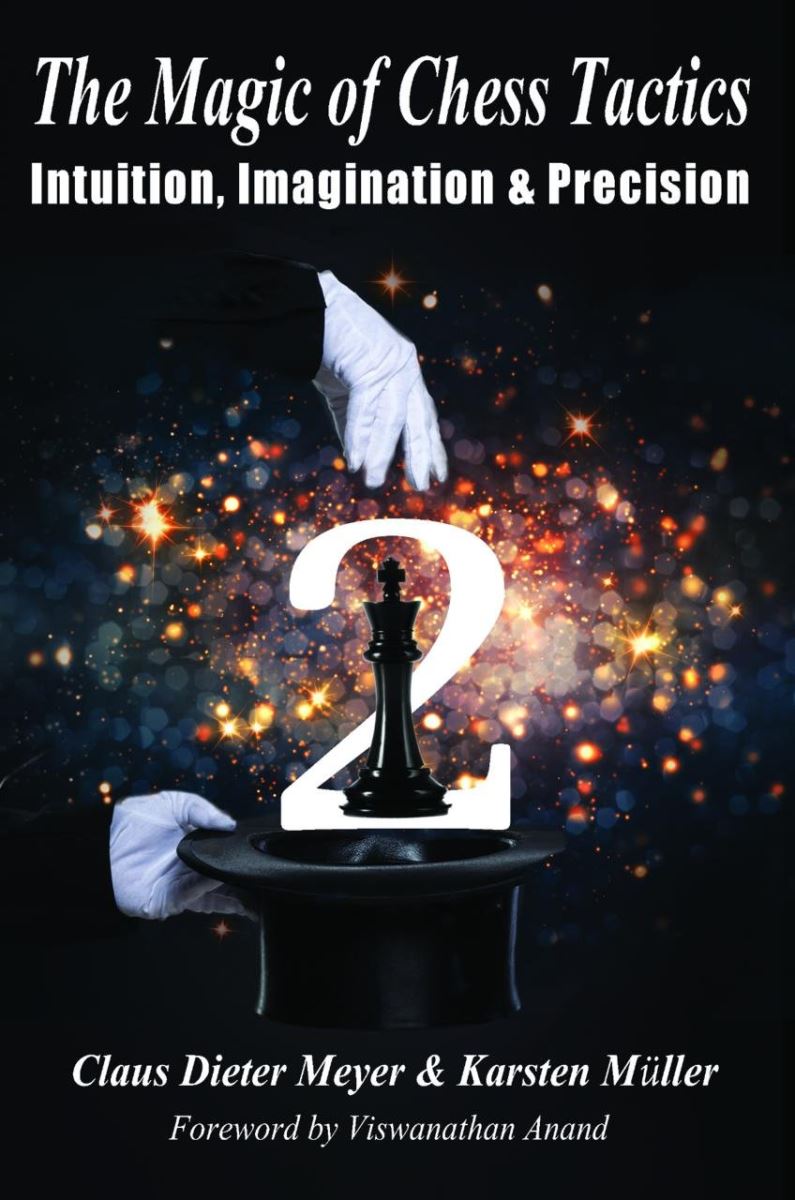 I was trying to write a combined review of the DVD and this book, which is based on the Chessbase DVD with the same title, but the two mediums are quite different, and they deserve their own space, in order to better serve the readers. The authors of this book, who deserve our praise for giving us a modified version of the DVD, tailored the book to the needs of a chess player who prefers to read on paper.
I was trying to write a combined review of the DVD and this book, which is based on the Chessbase DVD with the same title, but the two mediums are quite different, and they deserve their own space, in order to better serve the readers. The authors of this book, who deserve our praise for giving us a modified version of the DVD, tailored the book to the needs of a chess player who prefers to read on paper.
Let's be clear, the difference is significant in terms of visualization as well. For example when I watch a Chessbase DVD, I have the authors talking to me, the diagrams are huge, and you can flip the board with one-click.
With a book there is no such flexibility. The diagrams are from White side also when the side to move is Black, and also when the concept explained is from the Black side. Personally, it kind of obliges me to use a board, instead of my mind's eyes.
However let me tell you a practical reason for the two reviews: the DVD was authored in 2013, while in this book one can find positions from 2015 or even 2017, which means the authors worked hard into making a new original book, and not only a copy and paste of the material from the DVD.
The book is divided into six main chapters, which have many sub-chapters inside. The first chapter was designed to teach the power of the 'terrible duo', the Queen and Knight:
To learn how these two pieces interact, and how they successfully create mating attacks, is a clear must for every chess player. Like former World Champion Anand explained in the foreword to the book, one needs periodically to solve these kind of exercises. In fact, one day of our training regime, should be dedicated to these exercises, which are clearly difficult, and oblige us step out of our comfort zone.
The second chapter is dedicated to the knight on the attack! The sub-chapters teach how to exploit the dark squares weaknesses, an octopus on d5 or d5. For those who don't know what the "octopus" is, here an example of the Octopus Knight from the game Efimenko vs Fedorchuk.
The game is well annotated at page 139 of the book, but for those who are curious to see the game, and eventually compare with the annotations of the authors, here it is:
The square f7, another very important tactical point, is treated as well.
Chapter 3 is dedicated to the bishops, Chapter 4 on pins, and Chapter 5 is quite interesting because it covers how we can learn from world champions. The champions used as examples are Carlsen, Kasparov, and Anand.
The last chapter of the book is for exchanges and transformations. I like the topic, and found it quite entertaining both for the examples used and for the creative ideas which are conveyed.
At the end of each chapter there are some exercises, for a total of more than 80 positions (84 to be precise, if I counted well). Now one could think 80 positions are not much, but far from it; these are top GM games, and the positions were chosen to make you learn the art of analysis. So working on them just on your own could take a year, but surely the benefits one reaps would be seen in tournament play!
While writing the review, and working on the book, I had a few feelings. For example, many positions were clearly above my head (I'm around 1900). So I had to devise a system to use a book which in some instances is beyond my chess understanding of disciplines like calculation, vision, etc. I took a notebook, and would set the timer for ten minutes for each position, and after the time elapsed, I'd write down the lines I saw in my head. If the lines were clear — let's say the position asked to find a decisive advantage for Black — and I found it, I was happy, and then I'd check the solution.
If I couldn't find what the position asked, I would take another ten minutes, but this time I'd be allowed to move the pieces, and then write down the lines again, and finally check the solution.
While some people classify the exercises as difficult, I found the exercises in the book typical of real games. In real games we must stretch our imagination and creativity, and of course we often stretch the limit of our calculation power, where precision plays an important role.
Often in chess we hear the term "learning patterns", or how a chess master has a certain number of patterns stored into memory. I believe this book is quite important for everyone on the road to mastery for acquiring those patterns master level players know.
The beauty of the book is partly for the patterns, but instead I think the true beauty of this book lies in obliging us to think, to find a way of connecting patterns to find the solution, like in the following diagram:
In this position, one must answer the question of how to attack the enemy king, while at the same time tricking the opponent into believing we want something else. We are attacking something else, and from such a trick we create disharmony in the enemy territory, through which we can finally create the attack on the kingside with queen and knight — what we truly wanted all along!
I also felt something regarding the length and difficulty of some lines encountered, explainable through the following experience: Often during a tournament, while I'm thinking on certain moves and calculating, I feel I should have done more homework, and more calculation exercises. This is a book which can help us progress in this area, because most examples are from actual games, and they definitely require a lot of calculation power.
As I've remarked to many publishers, I cannot stand when a position is Black to move, and I'm seeing it from White side. Notice, I'm disappointed by Russell, because previously I bought other books: Alekhine — My best games of Chess 1908-1937, and Tartakower — My best games of chess 1905-1954, and the diagrams were oriented from the Black side when needed. Hence I guess lately all the publishers must have adopted the same software, which independently from the needs of the reader shows the diagrams only from White side. Here an example of diagrams oriented from the Black side for the Alekhine book:
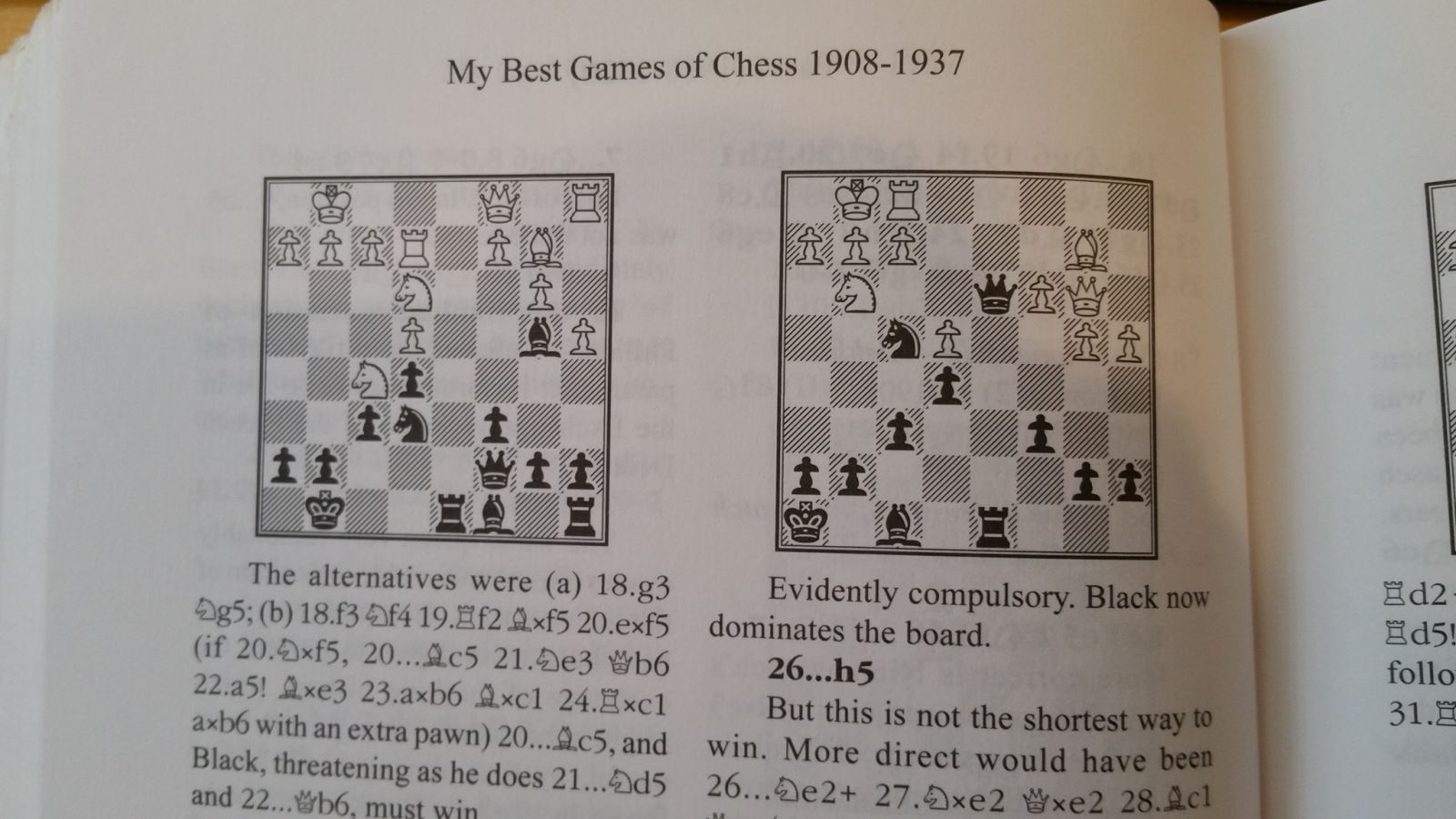
And here an example from the book of Tartakower, where we see one game was played with White and the diagram is oriented from White's side, and the other with Black, and it is oriented from Black's side:
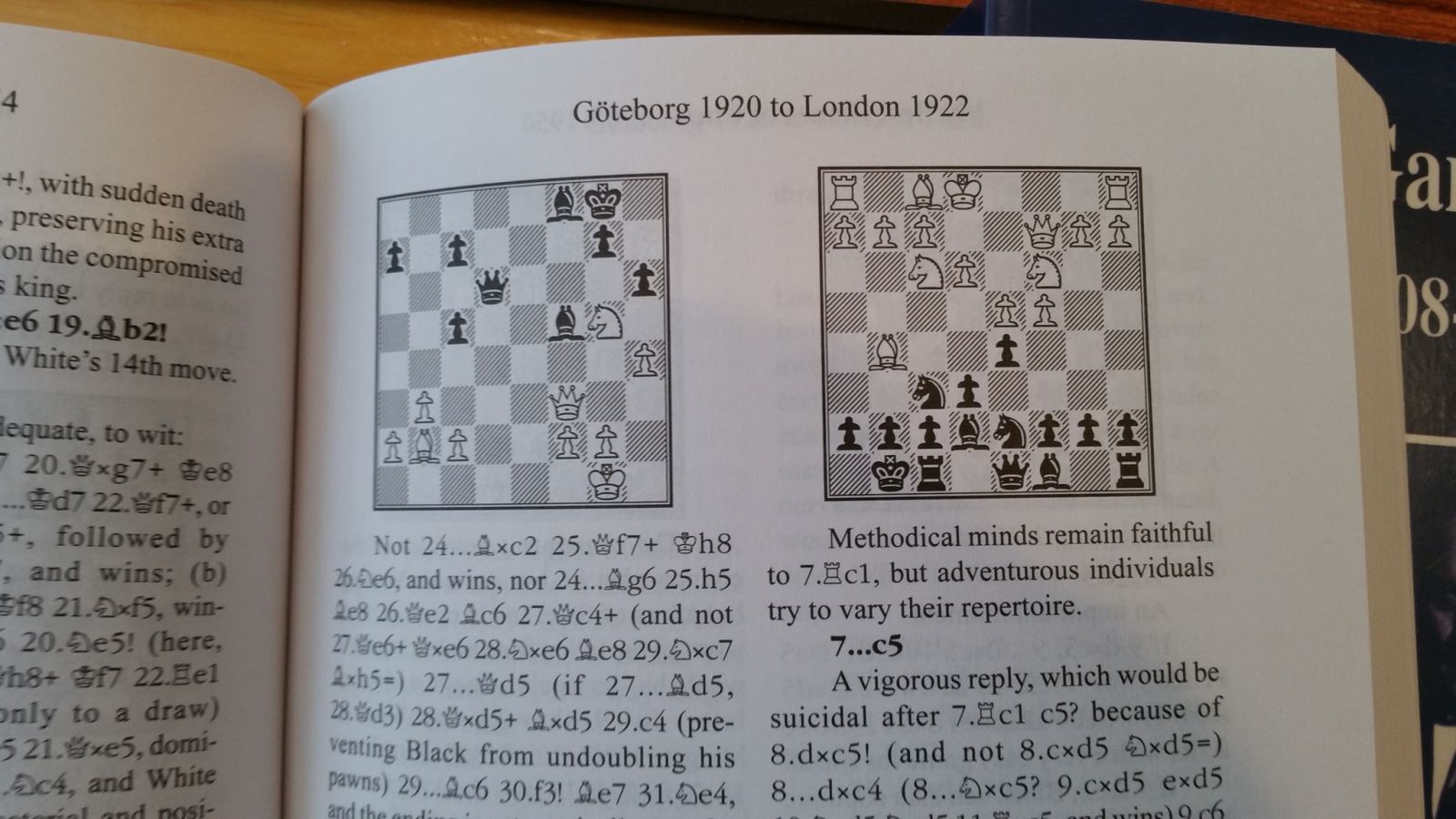
If you don't own the two books I just mentioned, please buy them, because they are masterpieces which should stay in the library of every serious chess player!
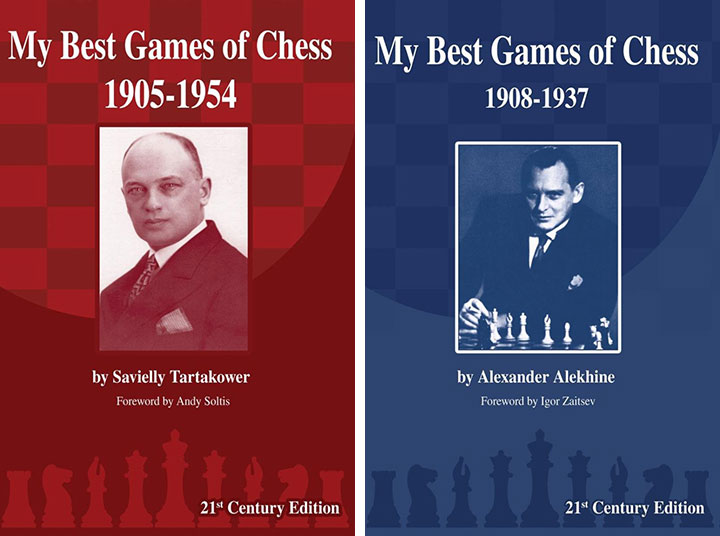
The diagrams don't have coordinates on the sides of the board. I believe this is important for some players, but I also think this book is aimed at those above a rating of 1800, and they should definitely know the board without coordinates.
In this sense we can compare the book to the DVD because with Chessbase I can choose if I want the coordinates or not, while with the book I have no such choice.
The second diagram of the book, on page 9, has two Black kings one on g1 and one in g8, I guess the White king didn't want to get checkmated, and camouflaged himself as the king of the Black army!
(Or more likely it was just a finger fehler — happens to the best of us!)
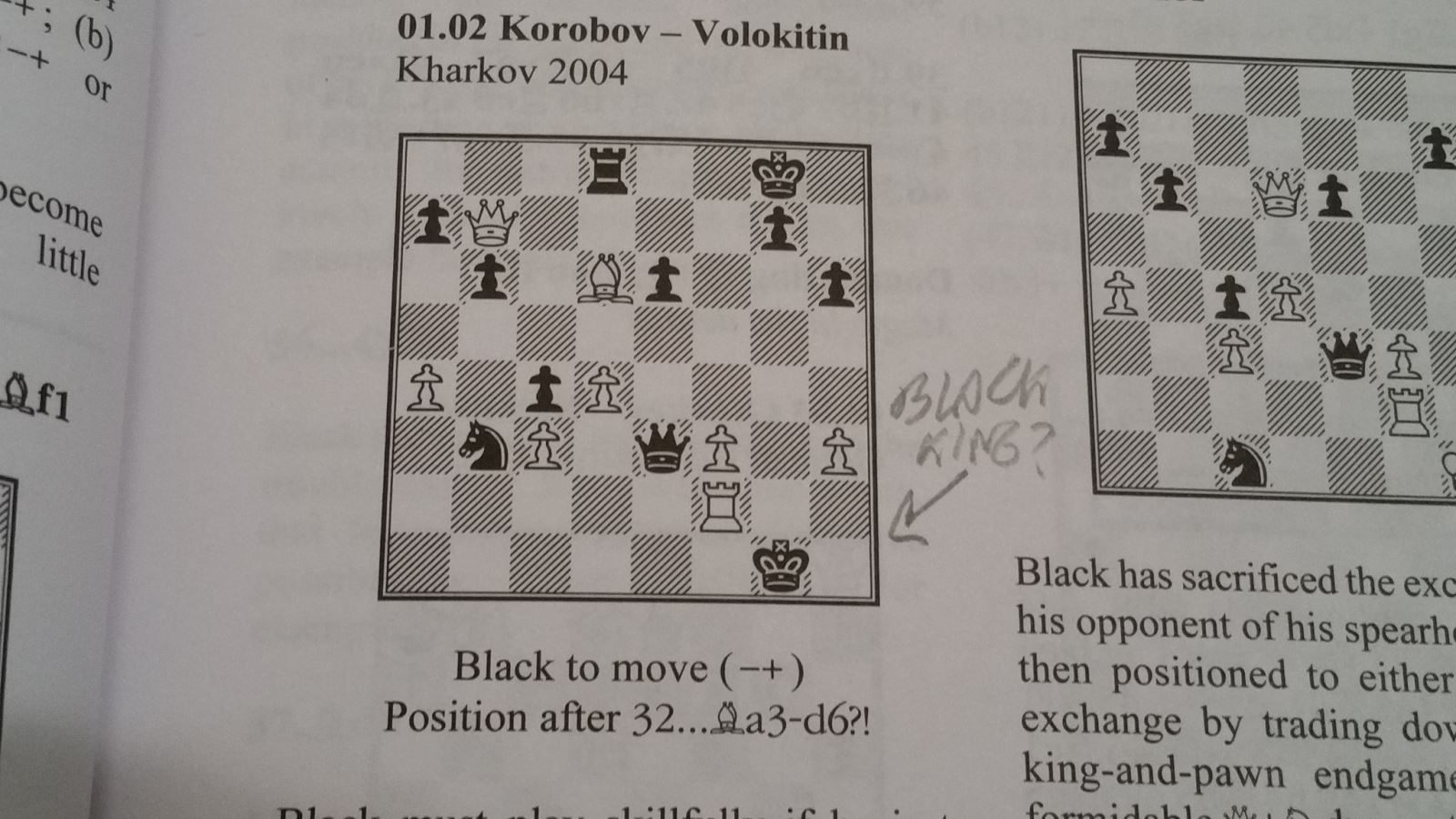
This is the correct diagram, taken from the DVD, and oriented from the correct side to move!
Another useful comparison between books and Chessbase DVDs, keeping in mind the second diagram above; to explain the position there are lines which go from four to thirteen moves long — many lines.

On a board we need to reset the pieces and start again. While on a computer it is easy to return to the beginning position.
I think on a chessboard such process takes away a bit of focus. Obviously before ChessBase chess players didn't have any other way. But I believe if one really wants to see all the lines mentioned then one need to buy a smaller chessboard, like we saw Fischer, and keep on that one the beginning position.
It is true, the authors or the publisher placed a diagram where most needed, however the "analysis" diagram has the same size of the starting position diagram, maybe it would have been better to make the beginning position diagrams bigger, and the analysis diagrams a little smaller to differentiate between them.
Also, on diagram 01.03 we see that a book is not the right medium for my preference taste, compared to Chessbase 14, for handling lot of variants and analysis.
For example at page 11, after the move 36...Nf4 we see in variant (I) the best defense as 37.Rf1, to which Black should answer 37...Nxg2!
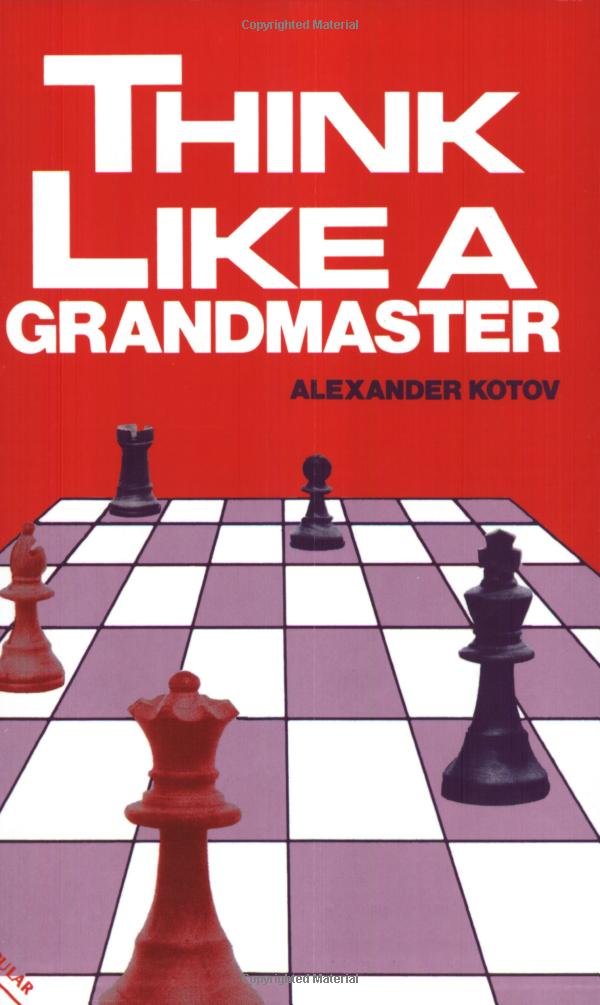
But if we want to know why White should or shouldn't play 38.Kxg2, in the DVD it took me a second to locate the answer, but in the book I had to go through two pages of thick analysis and discover the line on page 13 under the sub-heading (e) 38.Kxg2 Qg4+! etc.
Again some of the lines shown are 12 or more moves long, which in my opinion is too much, because in any case, as amateur/club player, I don't have that kind of patience in a game, I doubt I would see 12 moves, and all the tree of variants.
On the other hand, GM Kotov said in his book, "Think like a GrandMaster", that this is what one should do to become a GM, so I guess The Magic Chess Tactics 2 is the perfect book for those who are on the road to mastery, because it will teach them the fine art of analysis.
Why do you need to buy this book? The answer is simple: As players, in the beginning we learn common patterns like a fork, or a back-rank weakness, but at a certain point in our development, around 1900, all players see those easy tactics, and it becomes impossible to win a game based solely on them. Of course, blunders can happen, and they do happen to everyone — even at GM level — because we are all human. Maybe that day we had a quarrel with the wife, or a problem at work, before we play in the tournament, and our minds are not there, leading us to make an easy blunder. But in general it doesn't happen this way, and when it doesn't, we need a book like this one, which helps us to see beyond the most basic tactics, teaching us how to connect an attack on some weak points of the enemy army, and find the keys to unlock a combination over the board.
However, this is a difficult process. Here's another analogy that comes to mind: a martial artist. In the beginning, he is learning some defensive or attacking moves, and then when he becomes a master he is able to flawlessly execute those maneuvers, to trick his opponent into revealing a side, and then hit there.
Is this book for everyone? Definitely not. I believe it is more suited for players who already know basic tactical themes, who have already had a lot of tournament experience — maybe around 1800 and higher — and who aspire to go beyond their actual level. Definitely this is a book every 2000 rated player needs to buy and study more than one time.
Botvinnik said: "Chess is the art of analysis." This book is definitely for those who want to learn such art, obviously it comes with a price: lot of hard work.
The Magic of Chess Tactics 2
By Claus Dieter Meyer and Karsten Müller
Ruseell Enterprises 2017 - 192 pages